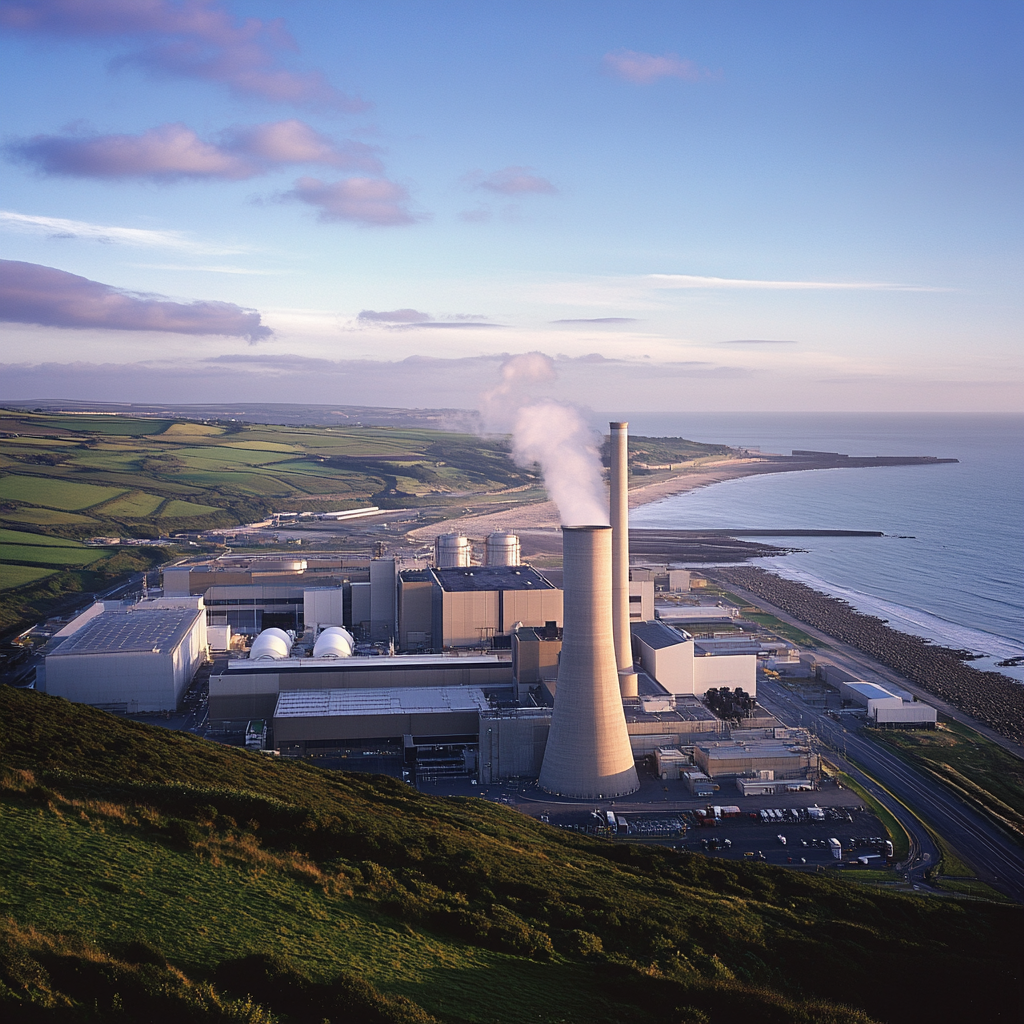
-
-
UK Accelerates Nuclear Expansion – Prime Minister Keir Starmer announced reforms to speed up the construction of small modular reactors (SMRs) by loosening planning restrictions and streamlining regulatory approvals.
-
Balancing Energy Security and Economic Growth – The initiative aims to reduce reliance on foreign energy, create skilled jobs, and strengthen the UK’s position as a global nuclear leader, though high construction costs remain a concern.
-
Mixed Reactions from Stakeholders – While industry leaders and unions support the move, environmental groups question the feasibility, cost-effectiveness, and safety of SMRs, calling for greater scrutiny of nuclear industry claims.
Prime Minister Sir Keir Starmer has unveiled plans to accelerate the construction of small modular nuclear reactors (SMRs) in England and Wales by reforming planning rules that have long hindered nuclear expansion. Emphasizing the need to “build, baby, build,” he outlined his vision to reestablish the UK as a global leader in nuclear energy, creating thousands of skilled jobs and bolstering economic growth. The government aims to dismantle bureaucratic barriers that slow progress, ensuring that nuclear projects move from planning to operation more swiftly.
Historically, nuclear power has played a significant role in the UK’s energy mix, generating around 25% of electricity in the 1990s. However, that share has since declined to approximately 15%, with aging reactors set for decommissioning over the next decade and no new plants constructed in recent years. The shift toward SMRs is intended to address this decline. Unlike traditional large-scale nuclear plants, SMRs are designed to be smaller, more cost-effective, and quicker to deploy. Despite their promise, these reactors remain commercially unproven, with around 80 different designs in development worldwide according to the International Atomic Energy Agency.
The reforms represent a landmark shift in nuclear policy. Previously, new reactors could only be built at a limited number of designated sites. That restriction will now be lifted, opening up more locations for development. Additionally, a Nuclear Regulatory Taskforce will be established to streamline the approval process for new reactor designs and simplify engagement between developers and regulators. The government hopes these measures will reduce the time required to bring nuclear plants online, which currently can span nearly two decades.
During a visit to the UK National Nuclear Laboratory in Lancashire, Starmer acknowledged the sluggish pace of nuclear projects and reaffirmed the government’s commitment to overcoming delays. He underscored the importance of nuclear energy in enhancing the UK’s energy security, citing the nation’s past vulnerability to external energy price fluctuations, particularly in the wake of Russia’s geopolitical actions. By investing in homegrown nuclear power, the government seeks to reduce dependence on foreign energy sources and mitigate market volatility.
Reactions to the announcement have been mixed. Industry leaders and unions have welcomed the move, emphasizing its potential to drive economic growth and support the country’s net-zero ambitions. The Nuclear Industry Association hailed the reforms as a means to provide certainty for investors, while GMB, a prominent labor union, reiterated its stance that achieving net-zero emissions is impossible without new nuclear projects. However, environmental groups have expressed skepticism. Doug Parr, policy director at Greenpeace UK, accused the government of uncritically accepting the nuclear industry’s promises without demanding sufficient evidence on costs, delivery timelines, and safety.
The broader economic feasibility of nuclear power remains a contentious issue. While nuclear energy is often cited as a stable and reliable source of electricity, the upfront costs of constructing new reactors are considerably high. The UK is already recognized as one of the most expensive places to build nuclear power plants, a factor that has deterred private investment. Nevertheless, the government remains optimistic that by simplifying regulations and expanding the number of potential sites, it can attract investors and accelerate the rollout of new projects.
This announcement builds upon prior nuclear commitments. The previous Conservative government approved the construction of a new nuclear reactor at Sizewell C in 2022, and in October, the Labour government allocated an additional £2.7 billion to the project. However, a final decision on its future will not be made until the upcoming spending review. Meanwhile, two large reactors at Hinkley Point C in Somerset are under construction and are expected to come online in 2030.
As the UK embarks on this ambitious nuclear expansion, questions remain about the viability of SMRs, the effectiveness of regulatory reforms, and the extent to which these efforts can contribute to energy security and economic growth. The success of this initiative will depend on balancing industry enthusiasm with rigorous oversight, ensuring that nuclear energy remains a safe, reliable, and economically sustainable component of the nation’s energy strategy.
-

0 Comments